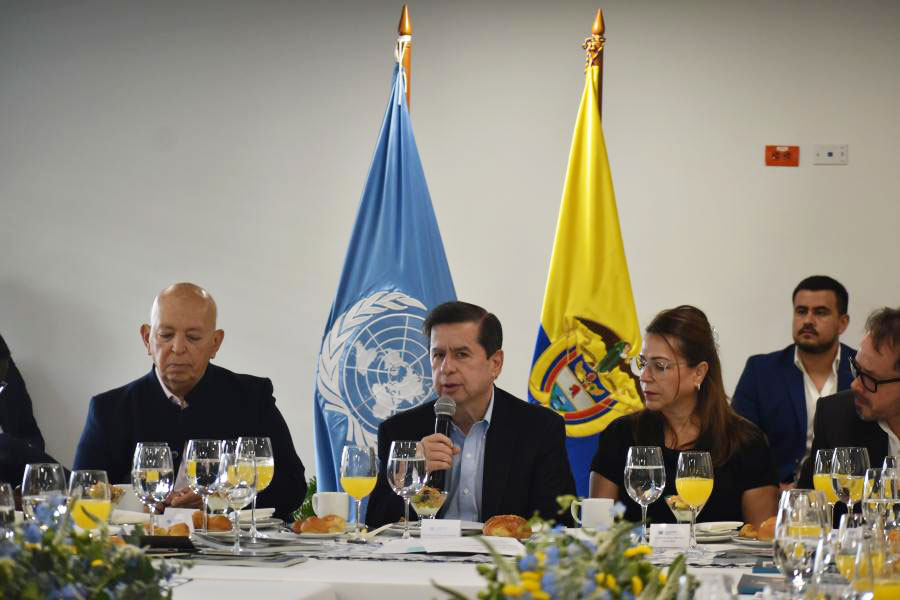In mid-2024, the National government announced a rapid response plan [1]to speed up the implementation of the Peace Agreement. This plan included an ambitious but transformative approach for the territories, based on six pillars:
- Territorial pacts to speed up the transformation of territories
- Coordinated Comprehensive Rural Reform
- Legislative agenda to fulfil and progress on.
- Coordination of security in the territories
- National Agreement for a Political Pact
- Governance of the rapid response plan
This is why, in the last quarter of 2024, the Fund decided that investments for the coming years must provide a strategic and catalytic contribution to the implementation of the Peace Agreement, driven by the rapid response plan with an emphasis on coordinated inter-institutional and territorial efforts.
In this regard, in 2025 the Fund will focus its investments on two main regions: Catatumbo, in close alignment with the Catatumbo Pact, identifying—together with the institutions participating in the Fund, but under a governance framework that includes local actors and institutions—the actions through which this mechanism can drive territorial transformation. Additionally, the Fund will promote the implementation of comprehensive transformative actions along the Pacific coast (Chocó, Central Pacific and Nariño regions), aligned with the pacts signed there, likewise aiming for the sustainable transformation of the territory.
Due to the persistence of alarming insecurity conditions in the territories, the Fund will continue to drive strategic investments that help to sustain protective actions for the communities, at the same time as promoting transformative public policies that favour the population affected by the conflict.
[1] https://www.mininterior.gov.co/wp-content/uploads/2024/09/14.10.2024-plan-choque-f1.pdf
Comprehensive action against landmines will also remain a key priority, as the clearance of territories from anti-personnel mines and explosive devices is considered a gateway to peacebuilding and development efforts. This will have a particular focus on municipalities where demining activities had previously not been possible due to the conflict.
The coming years will be crucial for transitional justice, and it is essential that the Colombian state has the structure in place to implement the restorative sanctions that the JEP will impose. It will continue to work with victims as the focus of its interventions, and for this reason, it will be key to support the acceleration of durable solutions so that institutions can contribute to development and peacebuilding efforts for the more than 8.5 million Colombians who have been forcibly displaced.
Actions to promote a culture of peace and peace education (free from political content) will continue to be driven from a comprehensive perspective, promoting peace as a public good, which is essential to transforming the reality of the Colombian people. At the same time, efforts will be made to encourage the ownership of the adjusted implementation framework plan by key actors. This will enable Colombian society to have more accurate and reliable information on the progress of the Agreement’s implementation.
And finally, the Fund will continue joining efforts to make peace in Colombia a reality. To this end, it will provide a rapid response mechanism to foster confidence-building measures between the parties engaged in peace negotiations, promoting direct actions in the territories that support territorial transformation, while also making available tools and mechanisms to facilitate the transition towards new peace agreements.
Given the current context of a global funding crisis, the actions prioritised by the Fund in the future must be truly strategic and catalytic, in order to ensure the efficient use of resources provided by international cooperation. To this end, the Fund will ensure that its investments:
- Are not allocated to covering governmental budget shortfalls
- Are directly related to the implementation of the Peace Agreement (and the Implementation Framework Plan), as well as the Interior Ministry’s rapid response plan
- Are catalytic and strategic, necessary and urgent for implementation, aiming at concrete results and not process actions
- Clearly coordinate between all necessary public institutions, with clear functional and budgetary roles and commitments for each sector/institution
- Contribute to and/or leverage other public and/or private investments








